A nest in the wheat fields
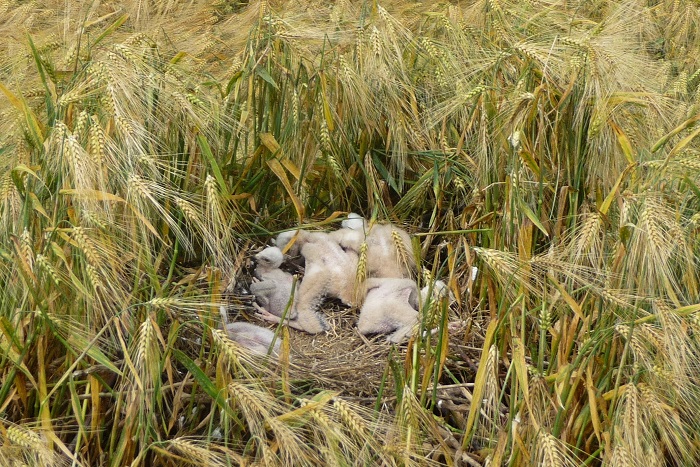
CABS project for the protection of the threatened montagu's and marsh harriers in the Rhineland
In spring, when the marsh and marsh harriers returning home from Africa have run the gauntlet of gunfire from many Maltese hunters' and successfully return to their Central European breeding grounds, they are presented with a - from their point of view - a fantastic picture: endless treeless grasslands that travel as far as the horizon, knee-high and somewhat open, with plenty of mice. Perfect conditions for a ground breeding birds of prey. But what the harriers regard as inviting natural meadows, are the cereal fields of our agricultural landscape and when the chicks hatch, the combine harvesters are already warming up.
Winter barley, of all things, is a particular favourite of the birds of prey that are also now highly endangered in Germany. The cereal, which germinates early in autumn, has just the right height of about 30 cm in spring and attracts the birds as if by magic. By mid to-late May the females lay up to 6 eggs in a simple straw nest. After an incubation period of approximately 30 days and brooding for 28 to 33 days, the birds are ready the fully fledge by mid July. The Barley matures quite fast on average. If the birds lay their eggs early, the Harvest generally takes place after the young harriers have fledged. However, if the spring is warm and sunny, the harvest may be brought forward to June and there is a danger that the nests will be destroyed and the young killed under the force of the combine harvesters. The problem is the fact that new cereals sown to ripen earlier and earlier - which is exacerbated by rising temperatures due to climate change.
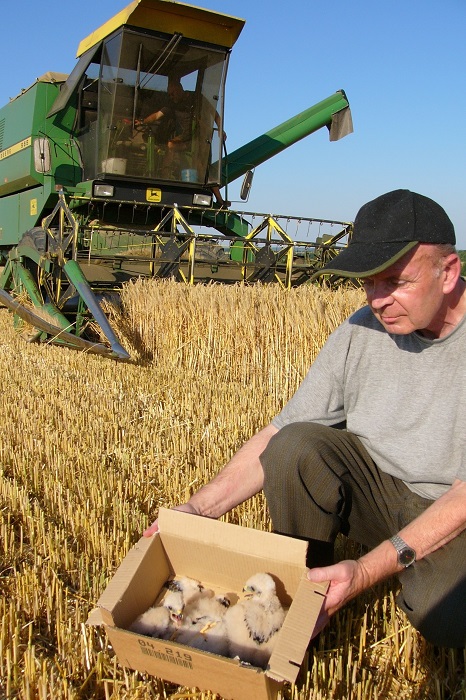
Marsh harriers were almost completely extinct in Germany in the last century. Harrier protection projects throughout Germany - especially in Bavaria (Würzburg/Franconia), North Rhine-Westphalia (Hellwegbörde/Soest) and Lower Saxony (East Frisia) - have helped the elegant birds to recover - today, more than 300 pairs breed again throughout Germany. The marsh harrier is a little more common. It likes to breed in reeds, but cannot escape the "attraction" of fresh green crop fields.
Together with local ornithologists, the district group Bonn of the nature protection federation Germany (NABU Bonn) as well as the biological stations of the districts Euskirchen, Düren and Bonn/Rhein-Erft. Since 2006 CABS tries to find and fence off all breeding places in the Börde between Cologne and Aachen before the harvests. The farmers are very cooperative and protection zones of 25 x 25 metres are established around the nests. Usually we build an electric fence around the nest to keep foxes, dogs and martens away from the brood. The farmers receive compensation for their additional costs and any crop failures. The funding is provided by the responsible nature conservation authorities or the Committee Against Bird Slaughter (CABS).
In this way, we secure up to 10 harrier nests each year - including all montagu's harriers that still breed in the Rhineland today!
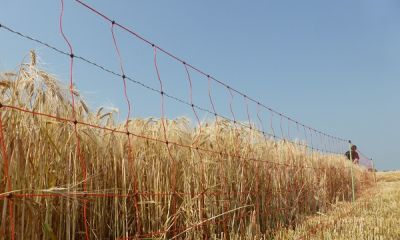
Electric fence around a harrier´s nest
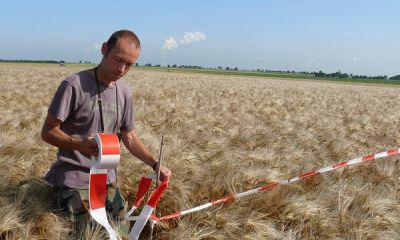
Marking a harrier nest in a barley field
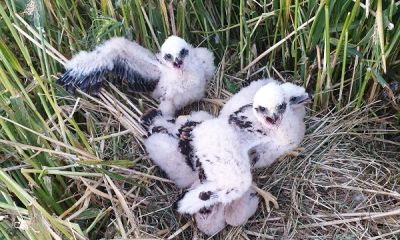
Marsh harrier chicks in a barley field






